When selecting a towing system, for pushing ahead, towing along side or towing astern no one size fits all. The rigging, wire and lines required will vary in size composition, construction and strength depending on the towing methodology, dynamic loading and the environment in which it is used.
Breaking strength is the average force at which a product, in the condition it would leave the factory, has been found by representative testing to break, when a constant increasing force is applied in direct line to the product at a uniform rate of speed on a standard pull testing machine. It should be understood that breaking strength, when published by the supplier was obtained in a laboratory under conditions which are almost always impossible to duplicate in actual use.
When choosing wire rope, synthetic and natural fiber lines, and cables, a design or safety factor should be computed by dividing the computed breaking strength by the stated working load, expressed as a ratio. For example 5 to 1, which is a ratio commonly referred to as the safe working load. The safe working load is generally thought of as no more than 1/5 of the lines breaking strength. In other words the wire rope should be 5 times stronger than the expected load. Always use manufacturers breaking strength when available to calculate the safe work load.
The owner, operator, and master should ensure that lines and wires are properly installed so as to guard against damage while in use. They should also identify inspection and retirement criteria and insure that these are communicated to the crew. Crew training on proper care, handling and repair of towing gear should also be addressed.
Tests and inspections of towing gear must occur before the vessel embarks on a voyage of more than 24 hours or when each new master or operator assumes command:
- Visual inspection of tackle
- Connections of bridle and towing pendant, if applicable
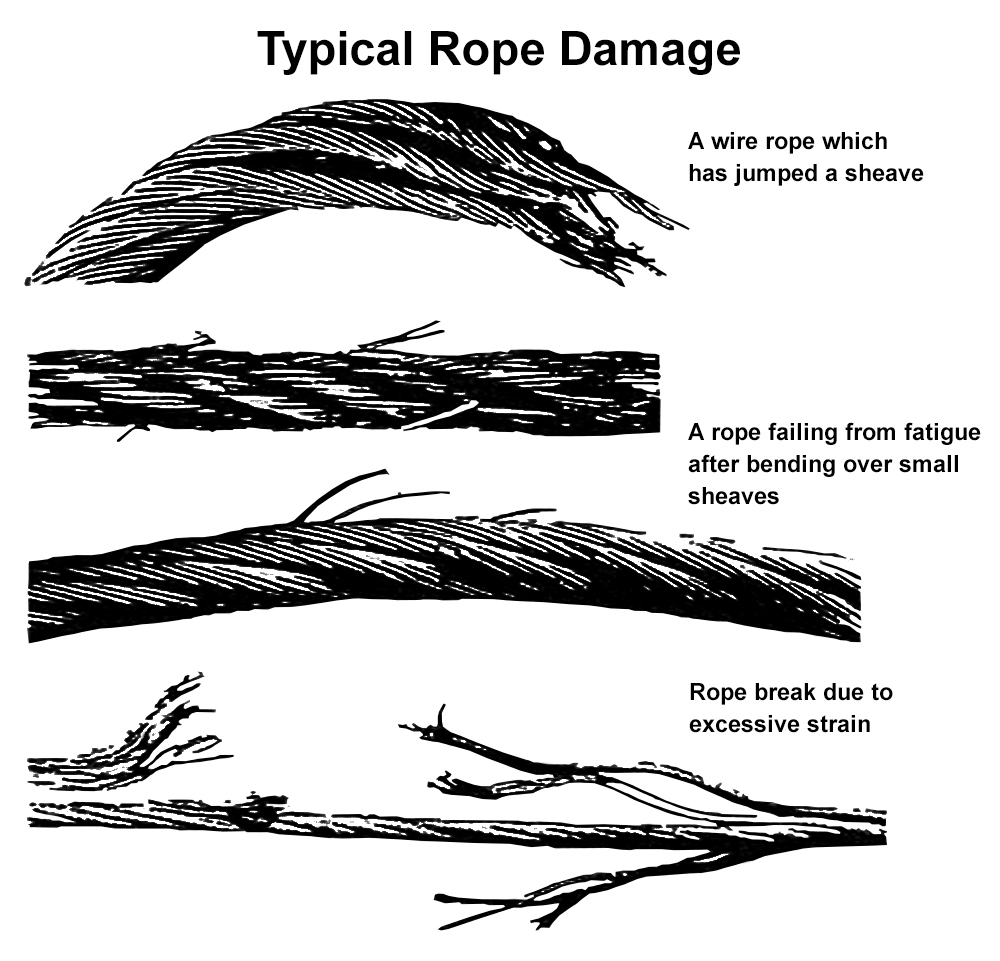
Wire diameter measurement
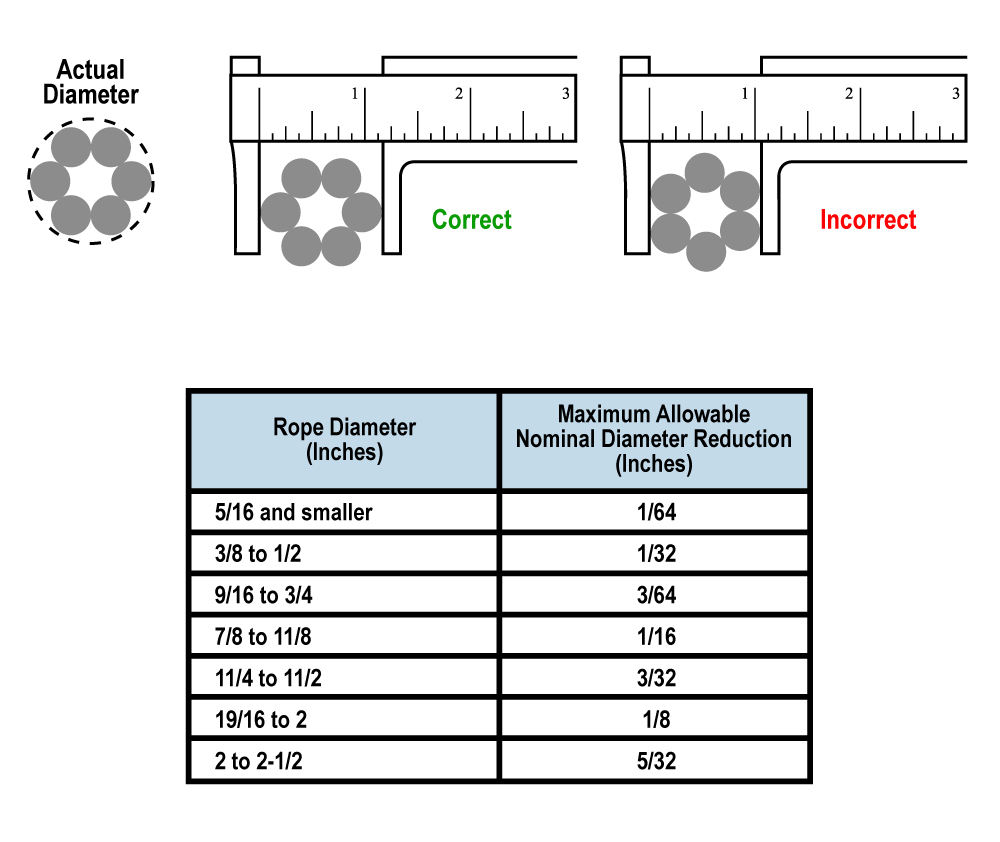
Procedures addressing emergency situations related to the tow, i.e. lost barge retrieval, are to be developed, and crews are to be properly trained accordingly.
Barge recovery
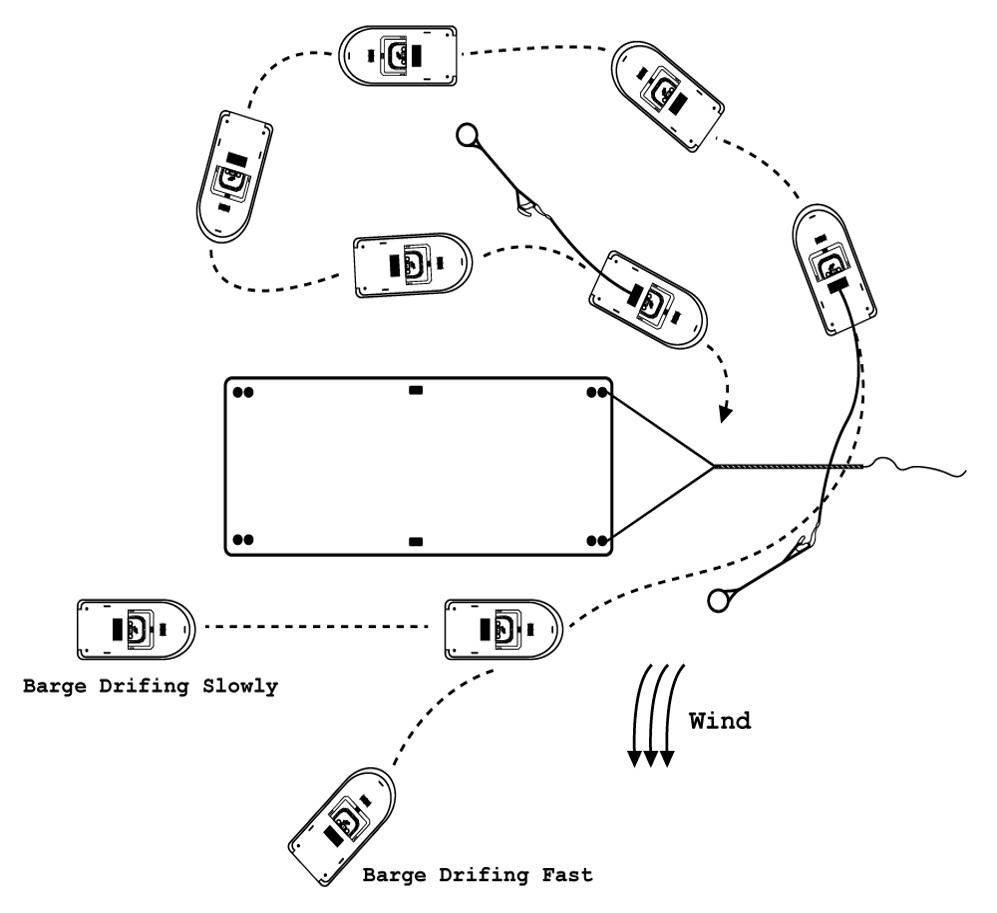
Barge recovery low speed approach
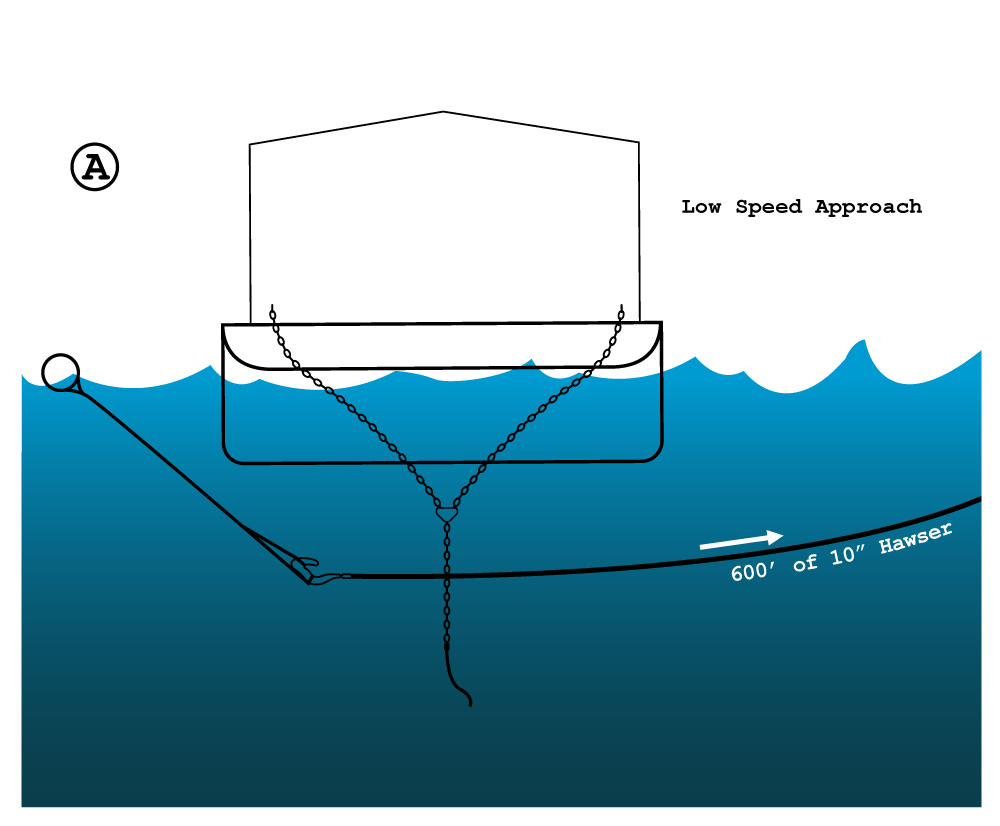
Barge recovery higher speed approach
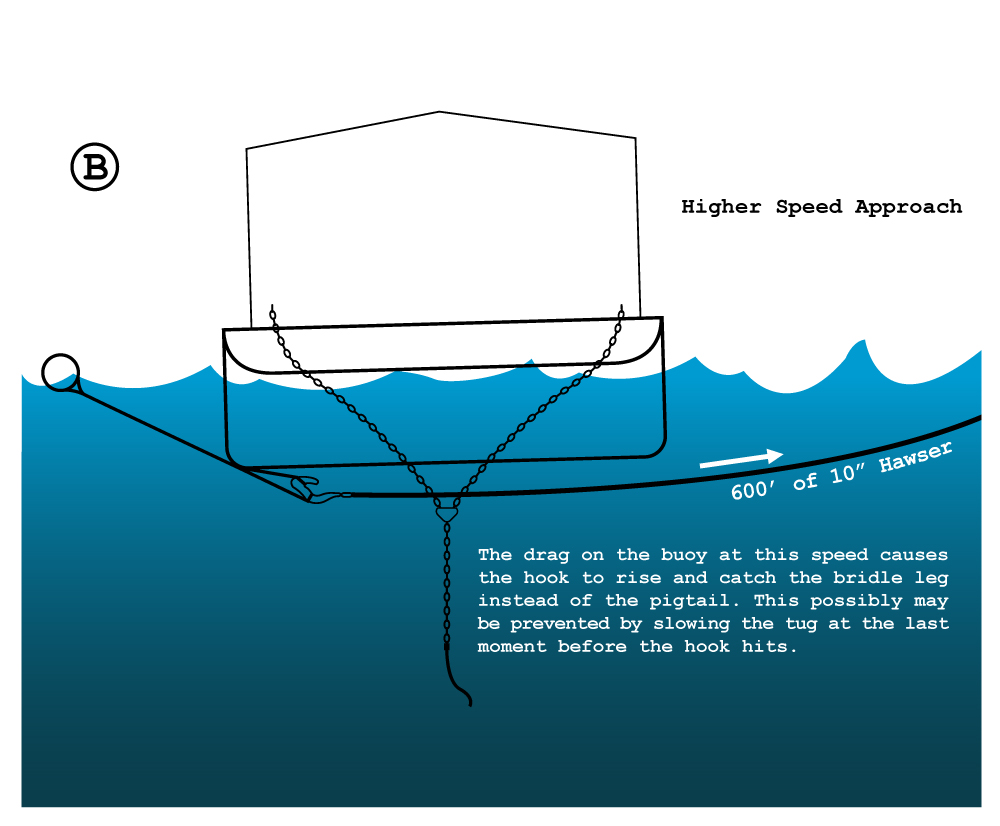
Items to check:
- Strength of each component adequate for intended service
- Size, material and condition of towlines, lines, wires, push gear, cables and other rigging appropriate
- Emergency procedures related to the tow / barge retrieval in place and provided to the crew
Regulatory Cites:
33 CFR 164.80 Tests, inspections, and voyage planning
46 CFR 140.615 Examinations and tests
46 CFR 140.801 Towing gear